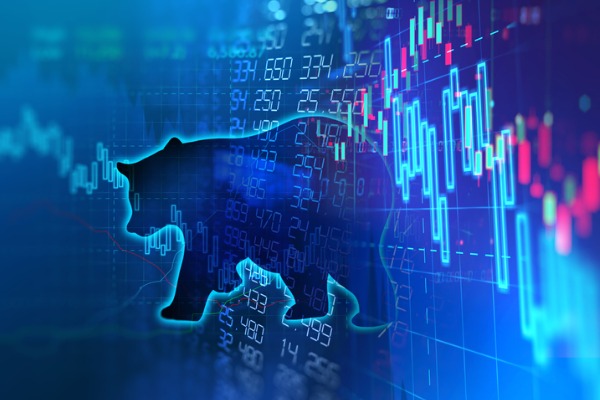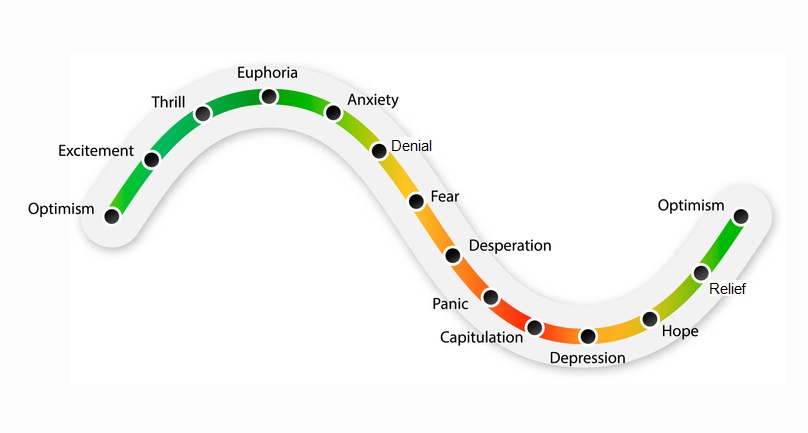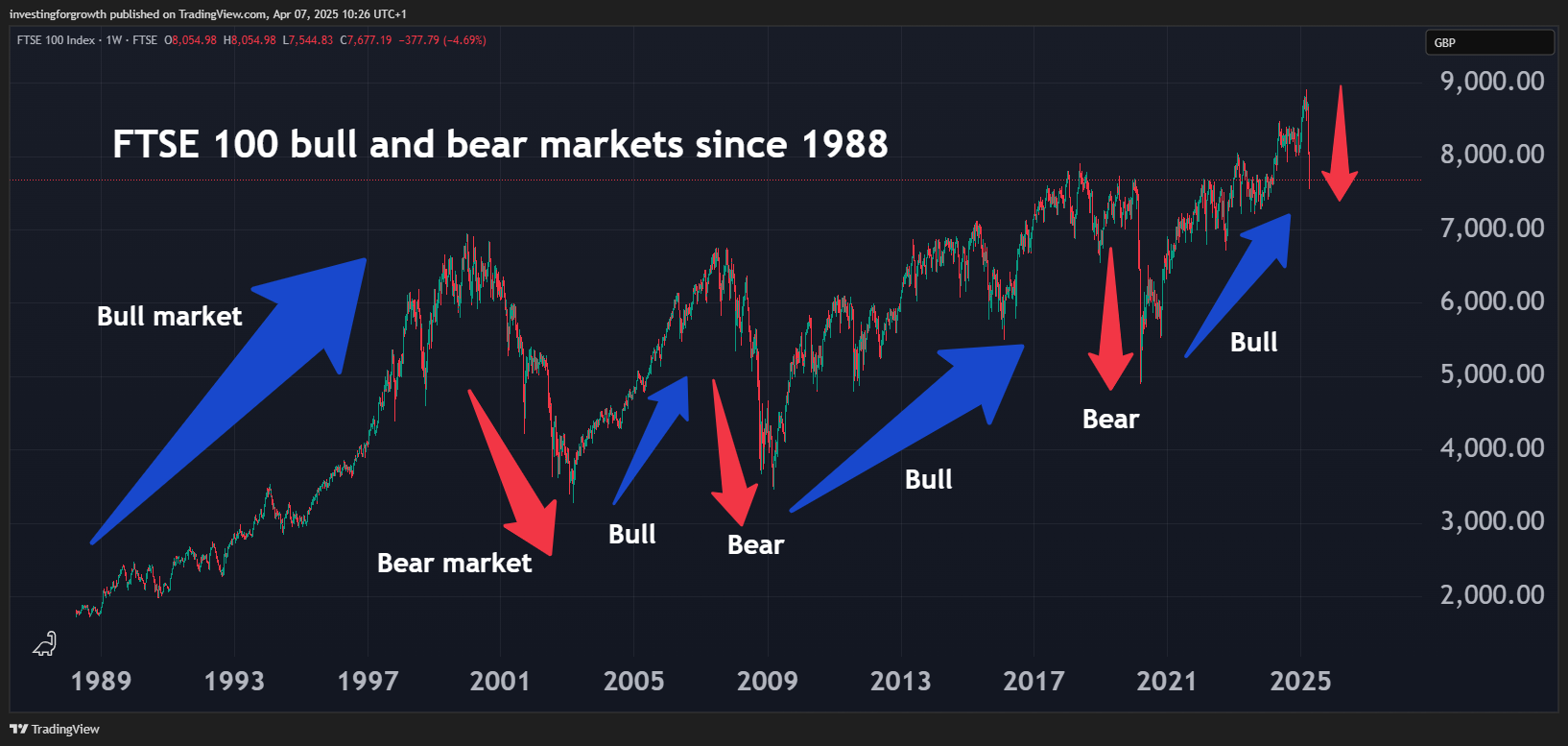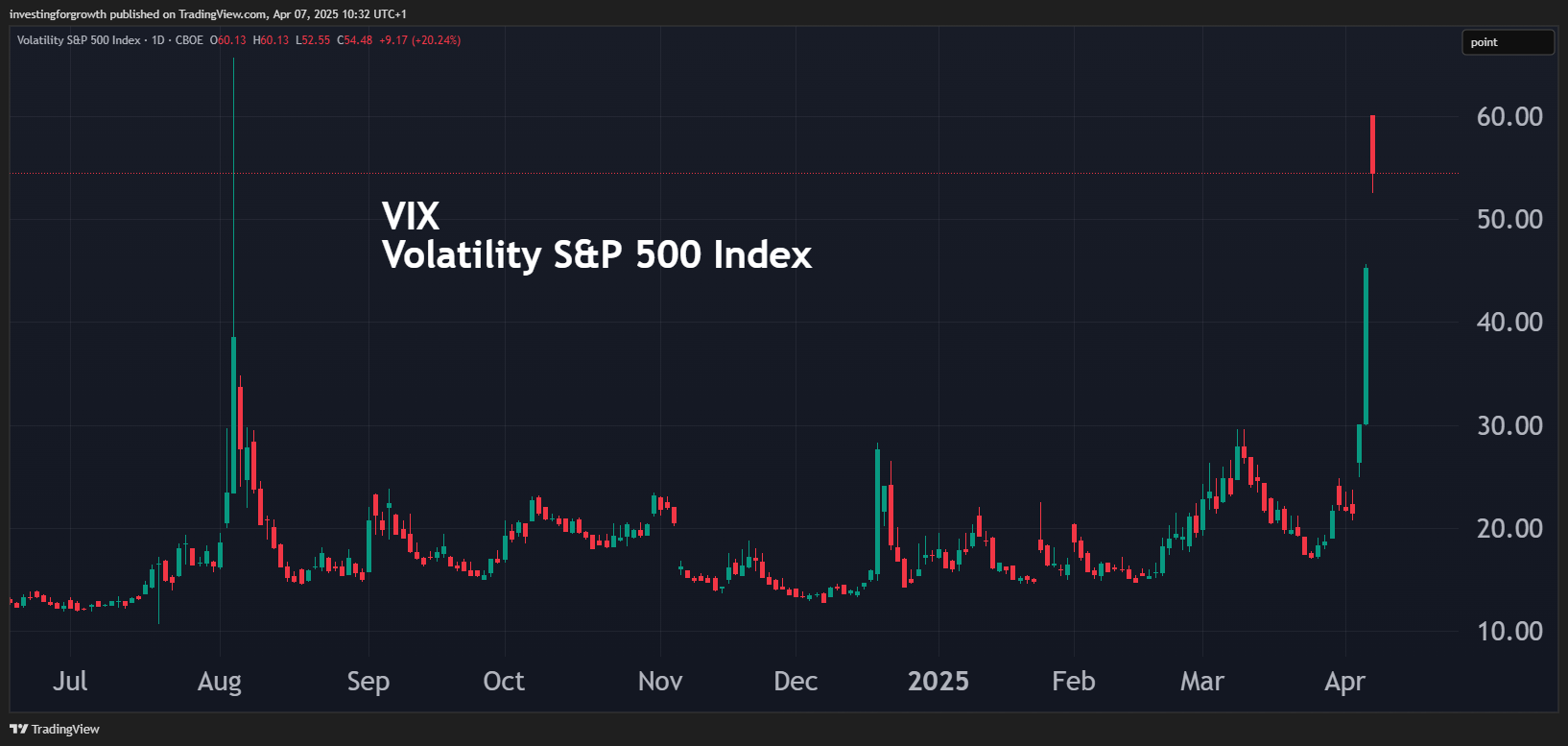Bear markets: what, why and how
No market ever moves up in a straight line for ever. Here’s what you need to know about the ‘blips’.
7th April 2025 10:21
by Keith Bowman from interactive investor

The word that strikes fear into every stock market investor is ‘bear’. Thankfully, it has rarely been used since share prices began rising at the end of the Global Financial Crisis in 2008-09. But first we had the pandemic in 2020 when stock markets around the world collapsed, and many of the biggest tech stocks entered ‘bear’ territory when President Trump started a trade war. But what is a ‘bear market’ and what does it mean for investors?
A fall in price of 10% from a recent high for an individual share, fund, trust, a commodity like oil or gold, or a stock market index, is called a ‘correction’.
If that decline extends to 20%, it is then referred to as a bear market. The term uses the visual image of a bear with claws down. Conversely, positive market conditions might be referred to as a ‘bull market’, referring to bulls, which use their horns in an upward direction.
The cycle of stock market emotions

There have been some extreme examples of bear markets in history, the most famous being the Wall Street Crash of 1929.
While such events are relatively uncommon, global stock markets have slumped significantly in 1987 (Black Monday), 2000-03 (Dotcom crash), in 2007-08 (Global Financial Crisis), and the Covid pandemic in 2020.

Source: TradingView Past performance is not a guide to future performance
As you can see, bear markets can happen in just a matter of days or play out over a series of months and years.
The causes are numerous, but one factor ties them all together - uncertainty in the outlook.
This might arise from a loss of confidence in the value of loan collateral held by banks, as in the financial crisis, or uncertainty in the exact value of lost business over coming months thanks to corporate shutdowns caused by the pandemic.
Prices don’t fall all the time during bear markets. They can rise too. In fact, some of the biggest market gains can happen in bear periods, although the cumulative price change over time is down.
A switch in investor psychology can see price rises used as a selling opportunity, just as dips can be used as buying opportunities in a bull market.
Extreme volatility
Jumps in the VIX, an index that measures volatility and which is often referred to as Wall Street’s ‘fear index’, usually occur during bear market periods. The VIX is seen as a measure of market risk - the higher the VIX, the higher the level of investor fear.
When volatility peaks, many global stock exchanges like New York, but not London, stop trading for 15 minutes. This is meant to prevent panic and give investors time to absorb and contemplate news and events.
Given the advent of electronic trading, these halts have become known as ‘circuit breakers’.
For the New York Stock Exchange, a 15-minute, or rest of the day circuit breaker can be applied depending on a 7%, 13% or 20% fall in the broad S&P 500 index.

Source: TradingView Past performance is not a guide to future performance
The tide always turns
Eventually, all trends change. Stocks made cheap during a bear market will be sought after when enough investors are confident that market conditions have stabilised. At the bottom of a bear market, dividend yields offered by equities will also typically be more attractive than savings accounts, as central banks might have been forced to cut interest rates to stimulate economic activity.
At the peak of a typical bull market, stocks trade on high valuations and are often priced for perfection, which means any slip-up that affects corporate profits is punished severely. It’s one of the reasons why the pandemic sell-off was so extreme.
The big question for investors during bear markets is how long will it last?
It took about four years for the FTSE 100 to recover to near its dotcom peak, and just a little longer to do the same following the financial crisis. Full recovery from the Covid crash took less than two years.
The clear takeaway here is that financial markets always bounce back. It’s why regular investing during a downturn can be such a powerful generator of investment returns over time.
These articles are provided for information purposes only. Occasionally, an opinion about whether to buy or sell a specific investment may be provided by third parties. The content is not intended to be a personal recommendation to buy or sell any financial instrument or product, or to adopt any investment strategy as it is not provided based on an assessment of your investing knowledge and experience, your financial situation or your investment objectives. The value of your investments, and the income derived from them, may go down as well as up. You may not get back all the money that you invest. The investments referred to in this article may not be suitable for all investors, and if in doubt, an investor should seek advice from a qualified investment adviser.
Full performance can be found on the company or index summary page on the interactive investor website. Simply click on the company's or index name highlighted in the article.